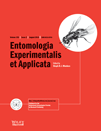View Item
- xmlui.general.dspace_homeCentros Regionales y EEAsCentro Regional Buenos Aires SurEEA BalcarceArtículos científicosxmlui.ArtifactBrowser.ItemViewer.trail
- DSpace Home
- Centros Regionales y EEAs
- Centro Regional Buenos Aires Sur
- EEA Balcarce
- Artículos científicos
- View Item
Molecular characterization of Apis mellifera colonies from Argentina: genotypic admixture associated with ecoclimatic regions and apicultural activities
Abstract
The European honeybee, Apis mellifera L. (Hymenoptera: Apidae), is considered as a main contributor to pollination of important crops and to honey production. Originally, beekeeping in Argentina was performed in an extended area covering the north and central region of the country and involving A. mellifera of European origin. Later, honeybees of African origin entered South America through Brazil and hybridized with European genetic resources, giving
[ver mas...]
The European honeybee, Apis mellifera L. (Hymenoptera: Apidae), is considered as a main contributor to pollination of important crops and to honey production. Originally, beekeeping in Argentina was performed in an extended area covering the north and central region of the country and involving A. mellifera of European origin. Later, honeybees of African origin entered South America through Brazil and hybridized with European genetic resources, giving rise to Africanized populations that are characterized by a more aggressive behavior among other unfavorable traits. In this study, a genetic characterization of 396 honeybee colonies from the most important apicultural region of Argentina is presented in order to provide an updated description of population structure and genetic diversity of commercial and feral colonies. Diversity was analyzed using mitochondrial (COI‐COII region) and nuclear (eight microsatellites) markers. Three European (M4, C1, C2J) and three African (A1, A4, A30) haplotypes were detected. European haplotypes were mostly found in commercial apiaries, whereas African haplotypes were detected at high frequencies in feral colonies. Microsatellite data were analyzed to estimate population genetic variability at the province level and to evaluate genetic admixture. A high level of hybridization between Africanized and European honeybees was detected with a significant latitudinal cline from north to south. Extensive population admixture resulted in the definition of four clusters that included both feral and commercial colonies and that are explained not only by geographical distribution and degree of Africanization but also by human influence through beekeeping activities.
[Cerrar]

Fuente
Entomologia Experimentalis et Applicata 166 (9) : 724–738 (September 2018)
Date
2018-08
Editorial
Wiley Online Library
ISSN
1570-7458
Formato
pdf
Tipo de documento
artículo
Palabras Claves
Derechos de acceso
Restringido
 Excepto donde se diga explicitamente, este item se publica bajo la siguiente descripción: Creative Commons Attribution-NonCommercial-ShareAlike 2.5 Unported (CC BY-NC-SA 2.5)
Excepto donde se diga explicitamente, este item se publica bajo la siguiente descripción: Creative Commons Attribution-NonCommercial-ShareAlike 2.5 Unported (CC BY-NC-SA 2.5)

